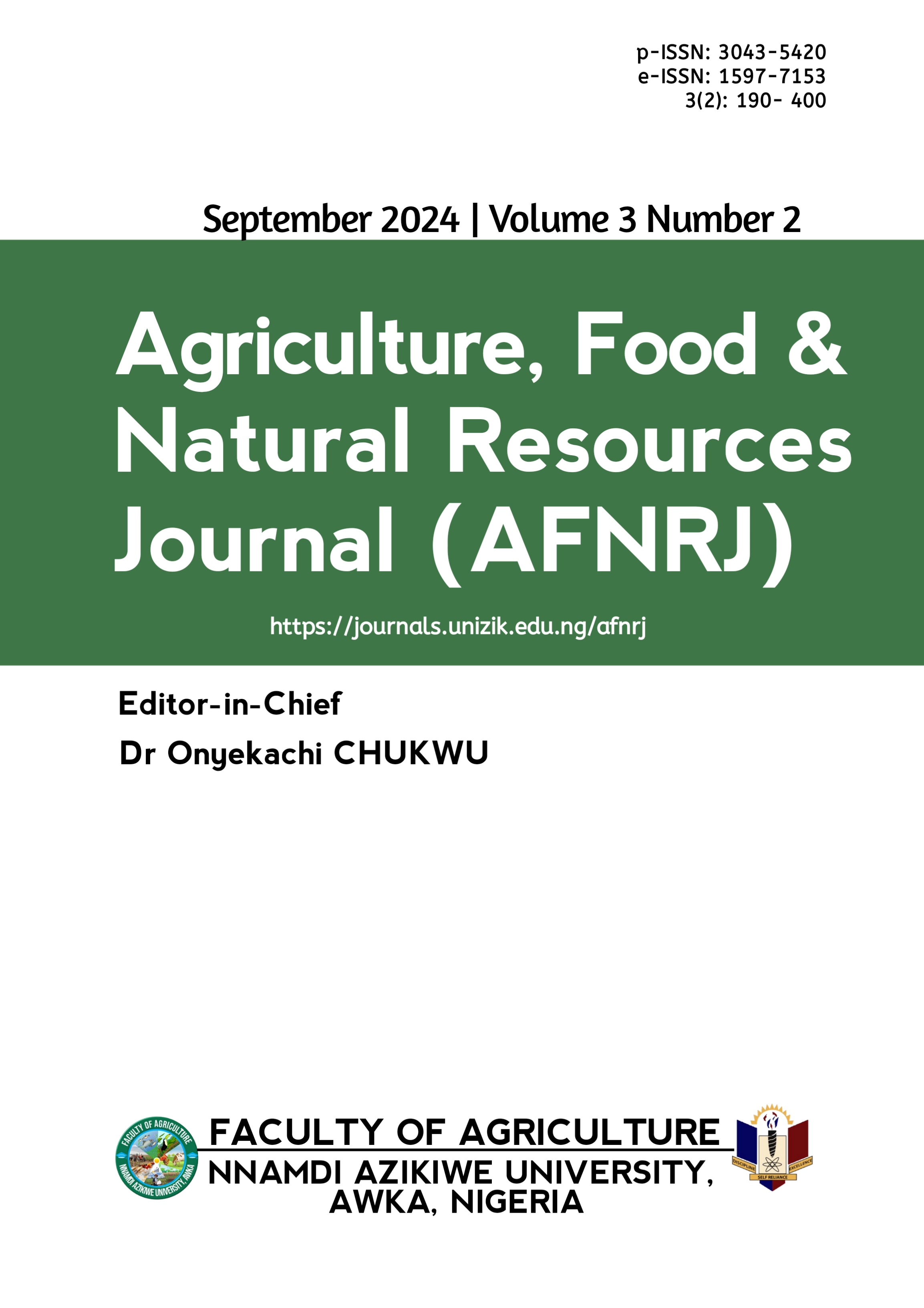Comparative studies of vegetative growth and nutritional properties of two basils (Ocimum gratissimum L. and Ocimum basilicum L.)
DOI:
https://doi.org/10.5281/zenodo.14397454Keywords:
Ocimum spp, Lamiaceae, Nutritional properties, Phytochemicals, Super-growAbstract
This study assessed the influence of super grow concentrations on the vegetative growth and nutritional values of two species of Ocimum. The experiment was laid out in a completely randomized design (CRD) in ten replications with four treatments of Super-grow (a liquid organic nutrient) with varied concentrations (T1: 5 ml, T2: 10 ml, T3: 15 ml, and Control: 0 ml). The two species of Ocimum leaf seedlings were nursed for five weeks and transplanted into pots. Data was collected on ten randomly selected plants, which included the number of leaves, leaf area, and plant height (cm). Matured plants were also evaluated for selected nutritional properties. Results showed that plant height and number of leaves of O. gratissimum across the nutrient concentrations were significantly longer and higher, respectively, compared to O. while, 10ml/litre nutrient concentration gave the optimal for both parameters. However, the leaf area of O. basilicum across the nutrient concentrations was significantly wider than that of O. gratissimum, while, 10ml/litre nutrient concentration gave the optimal leaf area. The results of the proximate showed that moisture content was higher in O. basilicum (63.9%) compared to O. gratissimum (60.53%) in plants that did not receive super-grow. O. gratissimum has a higher percentage of crude fiber (2.16) compared to O. basilicum (2.06). For carbohydrate, magnesium, copper, and cadmium, both species of Ocimum did not differ significantly (P < 0.05).
Downloads
Published
Issue
Section
License
Copyright (c) 2024 Funmilayo Mary OLOYEDE, Victoria Mercy ADEGBITE, Gbenga Gabriel

This work is licensed under a Creative Commons Attribution 4.0 International License.
which permits unrestricted use, distribution, and reproduction in any medium, provided the original author and source are credited.
Authors retain the copyright of their published work in the AFNRJ.





